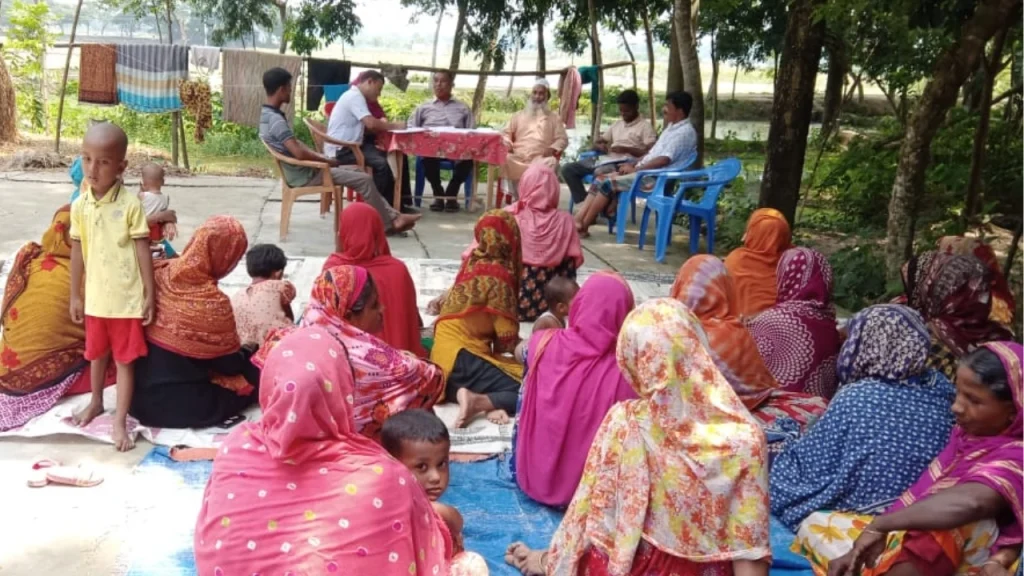Evaluate Project/Program Results:
Assessing Outcomes:
The primary objective of monitoring and evaluation is to assess the outcomes of projects/programs comprehensively. This involves examining the results achieved against the intended objectives and targets to gain insights into their operational status.
Understanding Impact:
Through systematic evaluation, organizations gain a deeper understanding of the impact their projects/programs have on the target beneficiaries or communities. This includes assessing both intended and unintended consequences to inform future decision-making.
Inform Decision-Making:
Data-Driven Insights:
Monitoring and evaluation provide data-driven insights that inform decision-making at various levels within an organization. By analyzing project/program results, stakeholders can identify strengths, weaknesses, and areas for improvement, leading to more informed and strategic decision-making.
Evidence-Based Planning:
Evaluation findings serve as evidence to guide planning and resource allocation for future projects/programs. Organizations can prioritize interventions based on the effectiveness and impact demonstrated through monitoring and evaluation processes.
Enhance Accountability:
Transparent Reporting:
Monitoring and evaluation promote transparency and accountability by providing evidence of project/program performance. Organizations can demonstrate accountability to stakeholders, including donors, beneficiaries, and the wider community, by sharing evaluation findings and lessons learned.
Learning from Mistakes:
Through honest assessment of project/program outcomes, organizations can identify mistakes or shortcomings and learn from them. This continuous learning process fosters a culture of accountability and improvement within the organization.
Facilitate Learning and Knowledge Sharing:
Capturing Lessons Learned:
Monitoring and evaluation facilitate the capture of lessons learned throughout the project/program lifecycle. By documenting successes, challenges, and best practices, organizations can build institutional knowledge and improve future project design and implementation.
Sharing Best Practices:
Evaluation findings provide valuable insights that can be shared with other organizations and stakeholders in the development community. By disseminating best practices and lessons learned, organizations contribute to collective learning and improve the effectiveness of development interventions.
Support Adaptive Management:
Real-Time Feedback:
Monitoring and evaluation provide real-time feedback on project/program performance, enabling organizations to adapt and respond to changing circumstances. By identifying challenges early and making necessary adjustments, organizations can improve the efficiency and effectiveness of their interventions.
Flexibility in Implementation:
Evaluation findings inform adaptive management practices, allowing organizations to be flexible in their implementation approaches. This agility enables organizations to respond to emerging needs and evolving contexts, ultimately improving the relevance and impact of their projects/programs.
Demonstrate Value and Impact:
Measuring Effectiveness:
Monitoring and evaluation enable organizations to measure the effectiveness of their projects/programs in achieving desired outcomes. By quantifying the impact of interventions, organizations can demonstrate the value of their work to stakeholders and secure continued support and funding.
Accounting for Resources:
Evaluation findings help organizations account for the resources invested in projects/programs and assess their cost-effectiveness. By demonstrating tangible results and cost-efficiency, organizations can build trust with donors and stakeholders and ensure sustainable support for their initiatives.
Promote Continuous Improvement:
Iterative Process:
Monitoring and evaluation are iterative processes that promote continuous improvement. By regularly assessing project/program performance, organizations can identify areas for enhancement and implement corrective actions to improve outcomes over time.
Feedback Loop:
Evaluation findings feed into the project/program cycle, informing future planning and implementation. This feedback loop ensures that lessons learned are incorporated into organizational practices, leading to ongoing improvement and innovation.
Ensure Sustainability:
Long-Term Impact:
Monitoring and evaluation contribute to the long-term sustainability of projects/programs by assessing their impact on beneficiaries and communities. By understanding the factors that contribute to sustainability, organizations can design interventions that have lasting effects and promote self-reliance among beneficiaries.
Exit Strategies:
Evaluation findings help organizations develop exit strategies for projects/programs, ensuring a smooth transition and sustainable impact beyond the project lifecycle. By planning for sustainability from the outset and learning from past experiences, organizations can maximize the lasting benefits of their interventions.
In conclusion, the objective of monitoring and evaluation is to maximize the effectiveness of projects/programs by assessing outcomes, informing decision-making, enhancing accountability, facilitating learning and knowledge sharing, supporting adaptive management, demonstrating value and impact, promoting continuous improvement, and ensuring sustainability. By systematically evaluating project/program results and incorporating lessons learned into future interventions, organizations can optimize their impact and contribute to positive change in the communities they serve.





